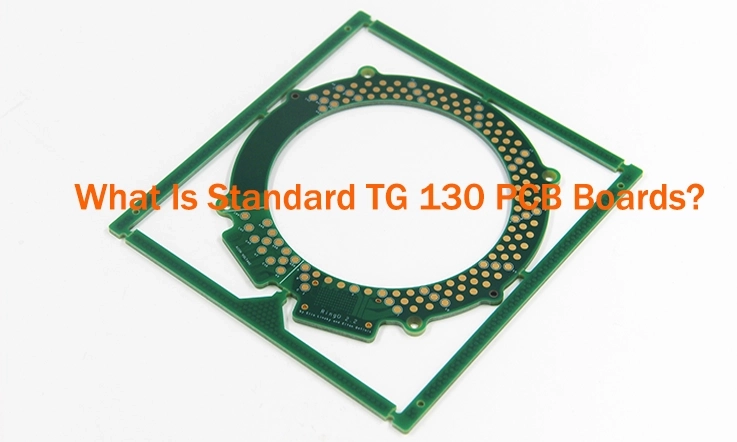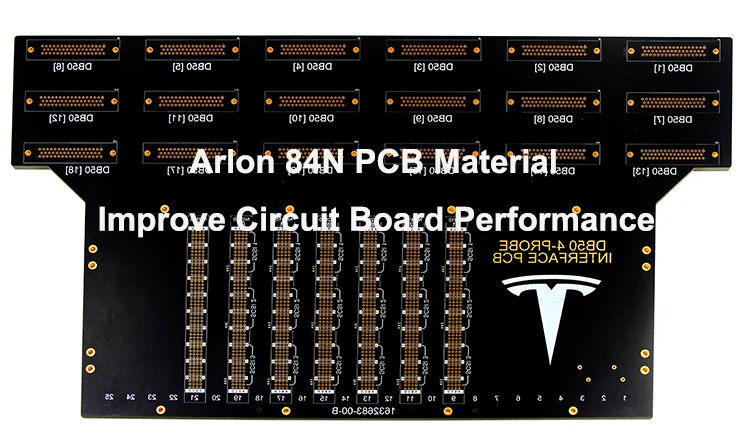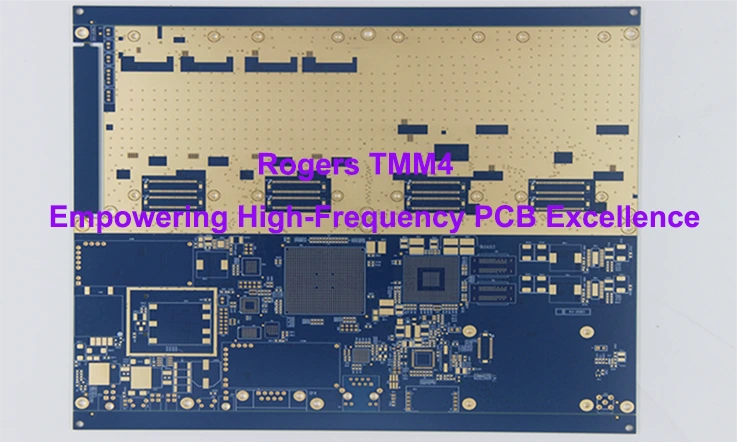
As a novice in design initially focused on grasping circuit boards and their various types and the procedures entailed in their manufacturing and assembly processes. Nevertheless, even after a decade of experience in the industry, we still encounter fresh and complex dimensions concerning PCBs that demand ongoing learning and comprehension.
In this article, We will provide a comprehensive overview of a critical aspect in PCBs—the significance of standard or low TG130 board thickness. Just as you once sought information on this topic, we believe that reading this piece will prove enlightening for individuals interested in TG130 PCBs and other related standard-size printed circuit boards. Let us now delve into the subject matter, exploring the importance of TG130 board thickness and its implications in PCB manufacturing.
TG130 PCB Circuit Boards
TG130 is a type of printed circuit board (PCB) material. It is recognized for its top notch quality and widespread application in the field of electronics manufacturing industry.TG signifies “glass transition temperature ” depicting the point where the material shifts from a form to a more malleable state.
TG130 PCB are recognized for their superior thermal stability and mechanical strength, therefore, these features making them ideal for application demanding high durability and reliability. These PCB provide excellent electrical insulation and are frequently used in high temperature environment or in situations where substantial heat is generated.
Materials Used in TG130 PCB Board Manufacturing
TG130 is a standard designation for a high temperature laminate material used in PCB manufacturing. TG130 PCB are engineered to handle higher operating temperature than standard FR4 board. The material used in the production of TG130 PCB typically include:
Substrate Material and Reinforcement Materials-
TG130 PCB primarily utilize a high temperature laminate, typically made from a reinforced epoxy resin system. This laminate is designed with a higher glass transition temperature (Tg) compared to standard FR4 materials. Besides, fiberglass is a standard reinforcement material in TG130 PCBs, offering enhanced mechanical strength and dimensional stability.
Copper Foil and Prepreg Material-
Copper foil serves as the conductive material in PCB, typically laminated onto the substrate and then etched to form the required circuitry. About prepreg sheets, which are resin impregnated reinforcement materials like fiberglass. It play a crucial role in the PCB manufacturing process. These sheets are partially cured and act as intermediate layers that bond the PCB layers together during the lamination process.
Features and Benefits of TG130 PCBs
● High thermal resistance
● Durability
● Good electrical properties
● Compatibility with lead-free processes
● Cost-effectiveness
When looking into PCB materials for your project needs TG130 stands out as a choice with its known characteristics and uses.However it’s important to remember that there exist a variety of materials, in the market each tailored to needs and functions.As you pick the PCB material for your project it’s crucial to take into account your specific requirements and seek advice from a PCB professional or manufacturer to guarantee the optimal material selection that suits your project best.
Key Specifications for Standard TG130 Printed Circuit Boards
Laminate Requirements and Minimum Peel Strength-
The lamination process for TG130 PCB is influenced by the board thickness. Typically, TG130 PCB have an average thickness of 0.5mm. However, customization options are available to adjust the board thickness according to the specific requirements of the TG130 printed circuit board. Another, peel strength is a measure of the mechanical strength of a material and is influenced by the thickness range of the finished product. In the case of TG130 PCB, board raw materials made from fiberglass cloth exhibit superior peel strength characteristics.
Minimum Volume Resistivity and Surface Resistivity-
Volume resistivity refers to the resistance of a material to water molecules. Standard TG130 PCB typically demonstrate specific class values such as C-96/35/90, higher temperature range E-24/125, and post humidity conditioning. These class values depend on the choice of board material and thickness. Besides, surface resistivity refers to the resistance between the layers of the PCB. TG130 PCB have three available classes: C-96/35/90, higher temperature E-24/125, and post humidity conditioning.
Maximum Moisture and Permittivity and Minimum Arc-
The maximum moisture absorption of TG130 PCB is influenced by the board thickness. Different thicknesses will have varying absorption capabilities. In addition, the dielectric constant, which determines the electrical strength, is influenced by the copper thickness on the PCB. These requirements also apply to other standard TG130 PCB board specification.
Minimum Flexural Strength and Thermal Stress-
The flexural strength of a TG130 board is influenced by both its length and cross properties which vary depending on the boards thickness exceeding 0.5mm. The flexural strength contributes to the board’s ability to withstand mechanical stress. Moreover thermal stress levels required by the PCB are also impacted by the thickness of the type of board whereby thicker boards generally exhibit superior resistance, to thermal stress compared to their thinner counterparts.
When to Used for TG130 in Printed Circuit Board Manufacturing?
FR4 TG130 PCB substrate is often chosen as a laminate material for manufacturing printed circuit boards (PCB) due to its qualities that cater to specialized needs and applications in the field of PCB design-
● General Electronics
● Low to Medium Complexity Designs
● Cost-Effective Solutions
● Standard Thickness Requirements
● Non-Critical Applications
It’s crucial to remember that when choosing laminates for your PCB design like TG130 you should consider operating conditions, signal integrity requirements, thermal management needs and cost considerations, to make the decision for your projects needs. Consulting us, we can help determine whether TG130 is the appropriate choice for a particular application.
What are Testing Methods for Tg130 Printed Circuit Boards?
Testing methods for TG130 printed circuit boards usually include checking the boards electrical functions thermal characteristics and overall dependability Here are a few commonly used testing methods for TG130 PCBs.
Electrical Testing-
● Continuity Testing
● Functionality Testing
● Signal Integrity Testing
Thermal Testing-
● Thermal Cycling
● Thermal Shock Testing
● Thermal Imaging
Mechanical Testing-
● Vibration Testing
● Mechanical Shock Testing
● Drop Testing
Environmental Testing-
● Temperature and Humidity Testing
● Salt Spray Testing
● Contamination Testing
Reliability Testing-
● Accelerated Life Testing
● HALT (Highly Accelerated Life Testing)
When it comes to testing TG130 PCB it’s worth mentioning that the testing approaches used can differ based on factor. Such as industry standard and the intended use of the PCB. Manufacturers and testing facilities might follow their testing procedures to guarantee the high quality and dependability of TG130 PCB.
Factors that can Impact the Pricing for TG130 PCBs
There are aspects that can impact the cost of a TG130 PCB (or any PCB). Important factors to consider are the dimensions of the board its intricacy level, the number of layers it has the manufacturer selected, its production location and any particular technical specifications needed, therefore all these elements can play a role in determining the price.
1)Board size and complexity and Material selection
The dimensions and intricacy of the PCB play a role in the fabrication procedure as well as the amount of materials utilized and the time required for production to complete successfully in a cost effective manner. PCBs can be single layer, double layer, or multilayer, with each additional layer adding to the complexity and cost of the manufacturing process. Therefore, production multilayer TG130 PCB design like PCB boards requires additional materials and involves complex manufacturing processes compared to single layer or double layer boards. Leading to a higher overall cost, for these specialized circuit board.
2)Copper weight and Material selection
The width of the copper lines on the circuit board (known as copper weight) can influence the cost involved in production processes. A higher amount of copper necessitates material and results in higher manufacturing expenses. The selection of PCB substance can have an impact on pricing well. Even though TG130 is commonly used due to its affordability and popularity there are materials, with differing price points to consider. Certain premium or tailored materials might be pricier compared to options.
3)Quantity and Turnaround time
Order quantity impacts PCB pricing. Typically, larger production quantities result in lower per unit costs due to economies of scale.At the same time, as the time needed for PCB production also affect pricing, urgent orders may incur charges for expedited service.
4)Additional features and Supplier and location
Any additional features or requirements to the TG130 circuit board such as special coatings (like gold plating) specific tolerances for precise manufacturing control may result in an increase in overall cost of the product.. Moreover the selection of a PCB manufacturer or supplier and their geographical location can also affect pricing structures.. Prices can vary across manufacturers due to differences, in pricing strategies and shipping fees while shipping and logistical expenses may also be impacted by the location.
Wrapping Up
The versatility and dependability of the TG130 PCB play a role in enhancing high temp electronic systems across different industries. Electronics manufacturers leverage the characteristics of this high temp laminate to create circuit boards ideal for electronic devices. Furthermore sustained research and enhancement of TG130 PCB technology will significantly drive the evolution of robust electronic solutions in the future.





